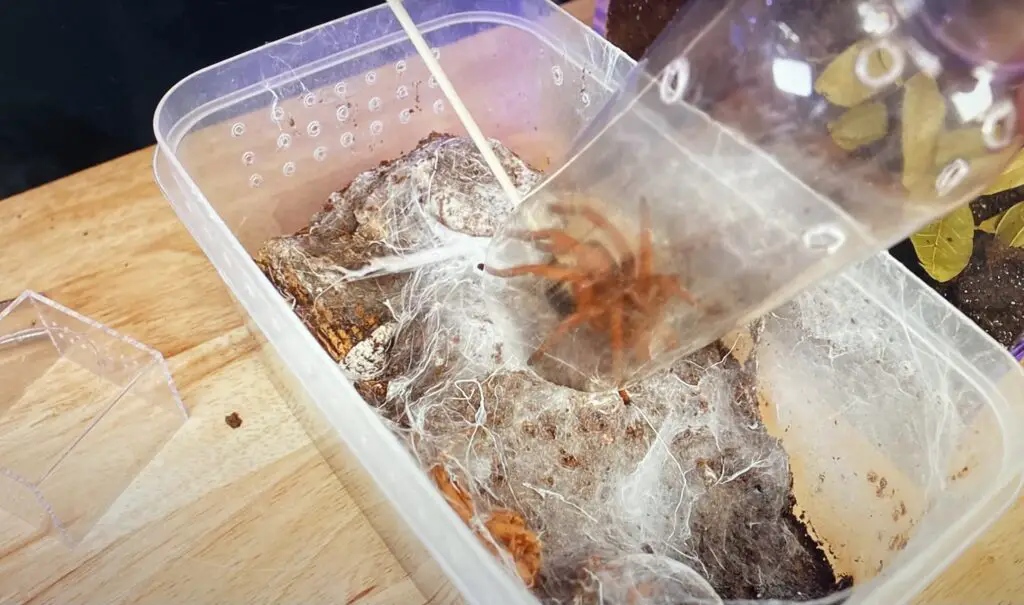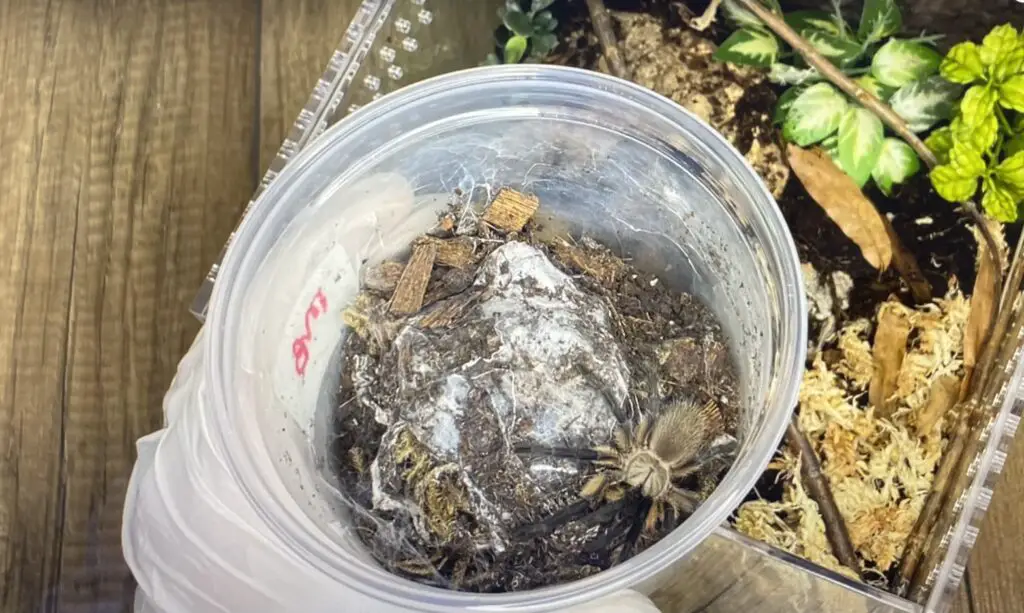Eventually, a tarantula will need a new enclosure, making tarantula rehousing necessary. This is usually because it has outgrown its current home and would benefit from more space. It could also be the result of a tarantula keeper growing in experience and wanting to create a bioactive enclosure.
Whatever the reason, moving a tarantula from its old home to its new home can be stressful. Many species do not like to be handled, so this is best avoided. Handling an aggressive or defensive tarantula can result in the arachnid’s loss or the owner’s injury, whether that’s from tarantula fangs or urticating hairs.
Thankfully, several methods can be used to keep both the tarantula and its owner safe during the move. However, it is important to remember that safety comes first in this type of situation.
Tarantula Rehousing: The Best Methods
There are three main ways to tarantula rehoming from one enclosure to another, as shown below:
The Bag Method
One way tarantula owners move their arachnids from one enclosure to another is using the bag method. This involves two pieces of equipment: a plastic bag and a rubber band. It is best used for juvenile tarantulas or slings. The plastic bag is placed at the open end of the enclosure, and the rubber band seals it closed around the enclosure’s opening.
A paintbrush can be used to poke a hole through the bag, guiding the tarantula into it. Once the tarantula is in the bag, pinch it closed and ensure it is away from your hands, as it can—and will—bite through the plastic. At the new enclosure, open the bag and carefully maneuver the tarantula into its new home.
The Bottle Method
The second way to move a tarantula – the bottle method – is perfect for burrowing species or smaller tarantulas. A clear plastic bottle should be cut in half, and the top end with the cap can be used. Simply place the cut end of the plastic bottle over the tarantula and slide paper or cardboard underneath to effectively trap the tarantula in the bottle.
Once the tarantula is in the bottle and transported to its new home, unscrew the bottle cap and guide the spider out of the bottle funnel with a paintbrush. This can be used to direct the tarantula straight to a pre-made burrow.

The Cup Method
Finally, there is the cup method. This is likely the method most people use to catch and move spiders that invade homes during the winter to move them back outside.
To stop the tarantula from running away and/or hiding, place a clear plastic cup over the top of the arachnid. Next, slide a sheet of paper or cardboard under the cup’s opening so the tarantula is fully enclosed by the cup and paper. This allows the tarantula to be safely transported without touching it.
Some tarantula keepers prefer to use deli cups with lids instead of paper. A paintbrush or other item can be used to guide the tarantula into the deli cup.
Safety Tips for Tarantula Rehousing
Due to tarantulas’ instincts, rehousing one can be difficult. Not only do they have the ability to bite or flick hairs at a threat, but tarantulas can also move suddenly and get lost in the house. This can cause additional stress for tarantula owners.
To ensure moving a tarantula goes smoothly, there are a number of safety tips that should be followed:
- Do not rehouse a tarantula alone. Tarantulas are unpredictable, and they can move suddenly when startled. If this happens, a second pair of hands can be useful if the tarantula crawls somewhere you cannot reach.
- Keep calm. Although it is a stressful situation, remaining calm is essential. Being frightened or nervous can cause accidents or mistakes, which are best avoided.
- Read the tarantula’s body language prior to moving. Aggressive and defensive behavior can cause injury to the tarantula and its owner, so it is best to avoid moving a tarantula that displays this body language. A tarantula should be left to calm down before rehousing; this could take a few hours or days, but it will be worth it to wait.
- Use a flat surface close to the ground. Falling onto the floor from up high can injure the tarantula, so it is best to use a surface that is close to or on the ground. The area should also be clear of items that could fall on the tarantula if it were to run away. Bookcases and cluttered areas should be avoided, too, in case the arachnid tries to hide.

The Risks Involved With Tarantula Rehousing
There are two main risks of rehousing a tarantula, excluding the chance that the tarantula spider could be lost during the move. As tarantulas are not domesticated, they will use ways of defending themselves against any and all threats, especially if they are unable to escape. As the owner, you could be at the receiving end of urticating hairs or venom.
Even though most tarantulas are venomous, this venom is unlikely to result in serious injuries or fatalities; you can read more on tarantula venom here. The urticating hairs, however, can be shot from the tarantula’s legs and cause irritation to humans.
In conclusion, tarantula rehousing requires careful planning and attention to detail to ensure a smooth and safe transition. By using the right methods, such as the bag, bottle, or cup techniques, and following essential safety tips, you can reduce stress for both you and your tarantula. Always prioritize safety, stay calm, and be patient, as a careful approach will make rehousing a successful and less stressful experience for both you and your arachnid companion.


